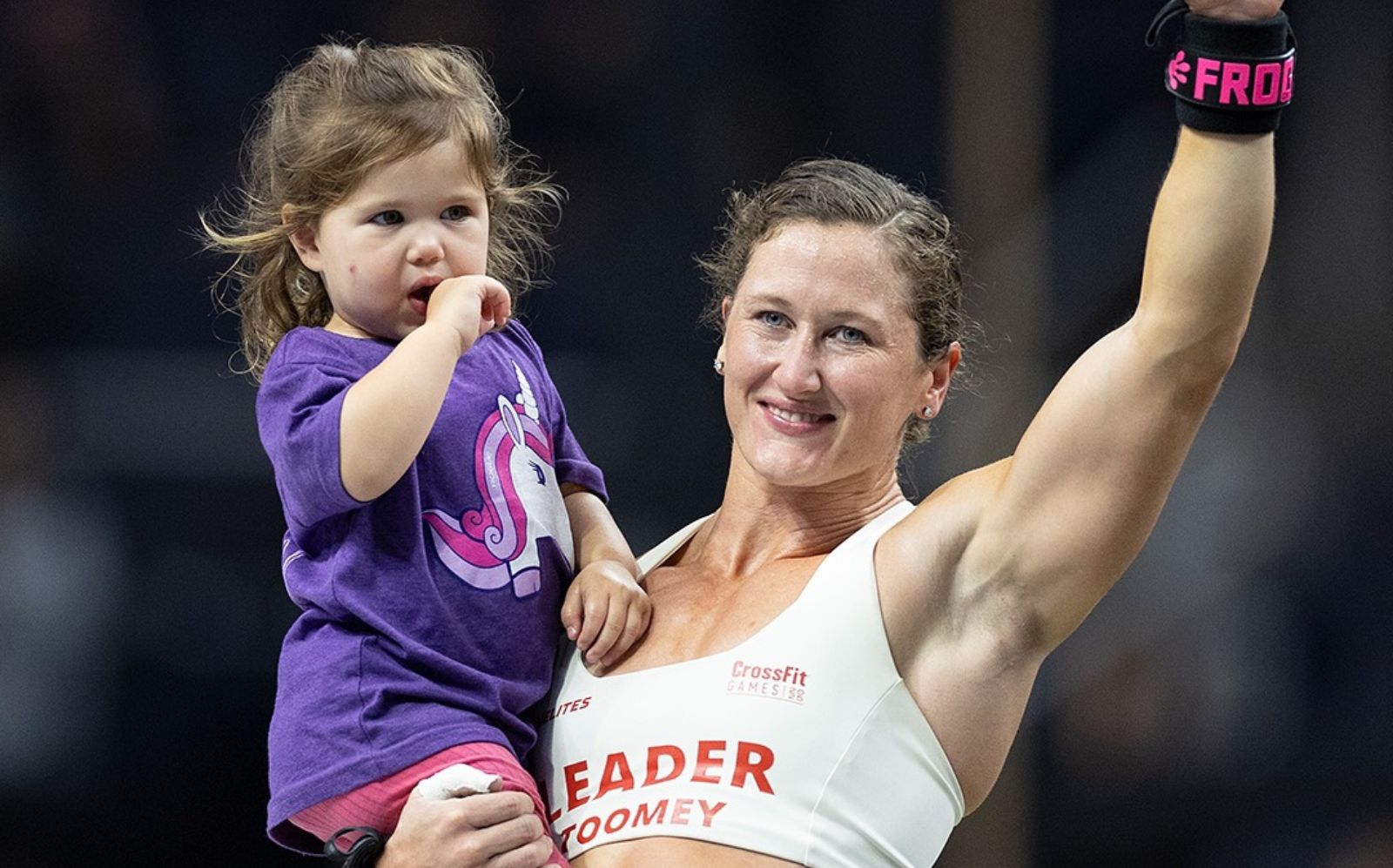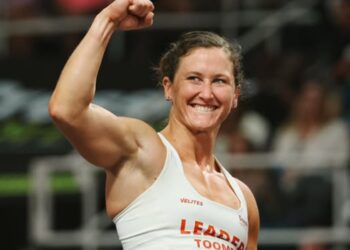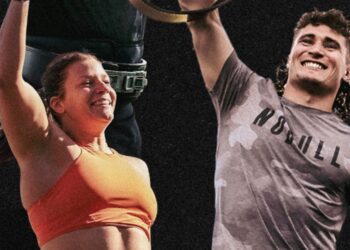There’s no doubt in anyone’s mind that CrossFit is hard. To be an intermediate level CrossFitter you have to be competent at an insane range of skills from advanced gymnastics movements to technical lifts that take years to master – just to be an intermediate, someone who could hold their own at a local competition.
To reach the top 1% in the world and make it to the CrossFit Games you not only have to be exceptionally skilled, but you also need the cardiovascular engine of a triathlete to back it up, plus the strength to throw heavy weights around both against a time limit and other athletes. Most of us will never get to this level, but CrossFit is still one of the best training programs you can do for strength, flexibility, fitness and skill development.
But still CrossFit gets a bad name. Where do so many people go wrong?
They do not scale appropriately for their own level.
It’s true that anyone can do CrossFit, but only if the workouts are adapted to suit the individual. Many people don’t have a clear idea of their own abilities, or are driven too much by ego, and try to complete workouts too close to their max weights or capability limits. This means they either can’t complete the workout properly or, end up hurting themselves.
If you attempted a CrossFit Games workout, even if you can do all the movements, you’ll probably find it takes you two to three times longer than games athletes – if you complete it at all.
Level Up Your Fitness: Join our 💪 strong community in Fitness Volt Newsletter. Get daily inspiration, expert-backed workouts, nutrition tips, the latest in strength sports, and the support you need to reach your goals. Subscribe for free!
This ordinary performance simply comes down to these reasons:
1. You are nowhere near as strong as them.
High-level Male CrossFitters are back squatting anywhere upwards of 450 lbs and snatching over 300 lbs. A workout like “Isabel” (30 snatches @ 135lb for time), is only 45% of their max, whereas for us mere mortals 135lb is usually 60%-100% of our 1RM snatch.
The Games Athletes can perform all 30 of the lifts at a high intensity without sacrificing their form – you won’t be able to. You don’t have the strength capacity to go at the same speed, no matter how good your technique or cardio fitness is.
2. You probably don’t have a solid sporting background
Successful CrossFit Athletes have a massive sporting background before starting CrossFit. Camille Leblanc-Bazinet, one of the most famous women in the sport, did 14 years of Gymnastics at a high level and was competitive in Soccer, Volleyball, and Rugby before even looking at CrossFit. For her, a workout with 21 muscle ups in it (“Amanda” 9, 7, 5 Muscle Ups & Squat Snatches) is practically a warm-up compared to her gymnastics days. If you don’t have that capacity and level of long-standing strength built up from years of training, then you are seriously asking for an injury.
3. You have a normal life
The life of an athlete is extremely challenging and is a full-time job. To train at a high level and make continuous progress involves a lot of sacrifices: no late nights, no bad food, no alcohol, no skipping the gym etc. This level of discipline is only achievable if it’s your only goal in life to be the best at CrossFit. If you have a 40 hour a week job, have kids or other responsibilities and the gym is mostly a stress reliever, then you can’t expect yourself to match the performance of the high-level athletes. The stresses of your own life will sometimes get in the way of your training progress.
So how can you scale your workouts properly?
1. Use progressions that match your skill level
The prescribed version of a workout is the long-term goal. The RX level doesn’t take anything about you into account: your current skill level, strength levels, mobility, stability, endurance level etc. If you’re only able to do 3 strict pull-ups and attempt “Fran” (21, 15, 9 Thrusters & Pull-Ups) you’ll either get a rubbish time score because you spent the majority of the workout staring at the pull-up bar, or you’ll try and kip your way through it – the quickest way to a rotator cuff tear.
Pick a progression that suits your level, e.g. Jumping pull-ups, or ring rows, and you’ll be able to complete the workout while improving your pulling strength for the future.
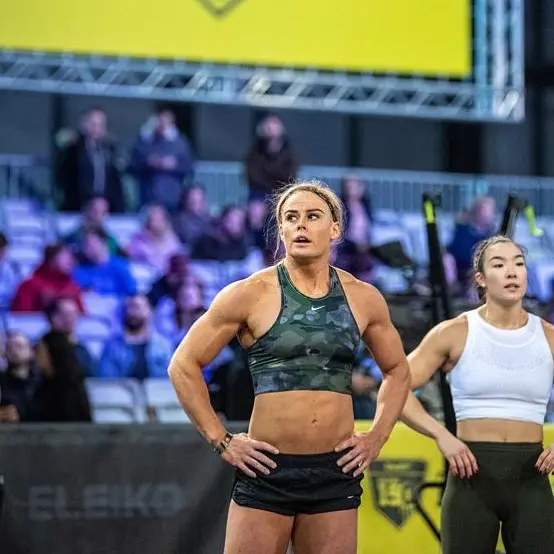
2. Use a weight you can control
To build your work capacity with a barbell then strip the weights back. This applies for both “heavy” and “light” style workouts. For example, the workout “DT” is:
5 rounds for time:
12 Deadlifts
9 Hang Power Cleans
6 Push Jerks
155lb for Males, 105lb for Females
The 155lb will be fine for the deadlifts for most guys, but if you get to the Hang Cleans or Push Jerks and have to do them 1 or 2 reps at a time then you’re not getting the most out of this workout. It’s meant to be a burner, ideally finished in around 15 minutes (3 minutes per round) or less.
The only way you’ll get better at this style of workout is to drop the weight so you can do the Push Jerks unbroken and complete it in 15 minutes or less. Next time add a bit of weight and push for a similar time.
There’s no point doing 2 reps then dropping the bar and staring at it for 30 seconds while you try not to imagine dropping it on your head. Use a weight you can control and that will let you complete the workout properly.
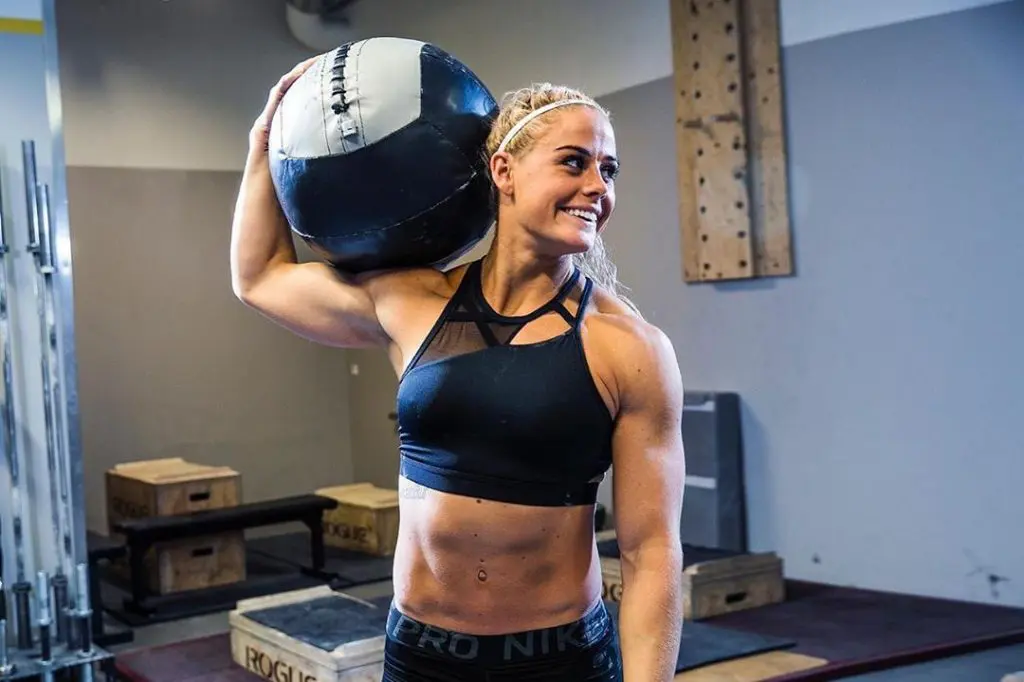
3. Focus on movement quality and breathing
If you look at the high-level competitors, they always move well even when they’re breathing heavy. This isn’t coincidence or a natural consequence of experience, this is deliberate. During your training make everything you do look good: no bad reps, no 60s breaks between reps because you came out too hot – learn how to pace yourself and learn where your threshold is.
Once you know, you can push it over time. At first it may feel like you’re going too slow or that you’re not pushing yourself hard enough but come the end of the workout you will see how other people start to fall behind and you just keep going.
Ultimately, the best thing you can do is get stronger outside of CrossFit workouts. Get in the rack, squat heavy, press heavy, deadlift heavy, put pauses and tempo into your strength work. Increase not only your 1RMs but also your higher volume strength such as sets of 10 or 20!
For the less straight forward bodyweight/skill movements, try an EMOM format (Every Minute On the Minute). For example, say you can do a set of 10 Toes to Bar once, then after that, you’re into singles, try a 10-minute EMOM doing 5 reps per minute. Over time, increase this to 6 sets per minute, when that’s easy do 7 per minute, etc. until you’re hitting 10 per minute for 10 minutes – totaling 100 reps! The next time you do a 21,15,9 workout with toes to bar in, you will have a far better performance because you put that time in outside the workouts.
Log everything you do and then you can be in charge of your own progress. You won’t be blindly following the RX prescription, but genuinely be able to scale the workout to a level you actually benefit from. You don’t just get better at CrossFit by doing CrossFit, you need to assess and plan for your own individual level and I definitely recommend getting one to one time with your coach for choosing the best progressions to suit you and your gyms programming.


